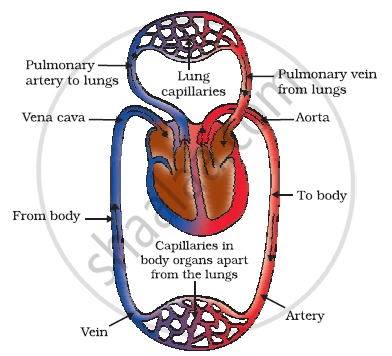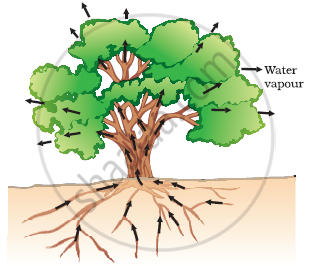Topics
Heredity and Evolution
- Heredity or Inheritance
- Protein Synthesis
- Transcription, Translation and Translocation
- Protein Synthesis
- Protein Synthesis
- Organic Evolution
- Theories of Origin of Life
- Evolution and Classiffication
- Evidences for Biological Evolution
- Darwinism
- Lamarck’s Theory of Evolution
- Speciation
- Human Evolution
Life Processes in Living Organisms Part -1
- Living Organisms and Life Processes
- Living Organism and Energy Production
- Formation of ATP
- Energy Production in Living Organism
- Cell Division: an Essential Life Process
- Mitosis and Its Phases
- Phases of Mitosis: Karyokinesis (Division of Nucleus)
- Phases of Mitosis: Cytokinesis (Division of Cytoplasm)
- Significance of Mitosis
- Meiosis as a Reduction Division
- Stages of Meiosis: Meiosis I
- Stages of Meiosis: Meiosis II
- Significance of Meiosis
- Differences Between Mitosis and Meiosis
Life Processes in Living Organisms Part - 2
- Introduction to Life Processes in Living Organisms
- Asexual Reproduction in Animal
- Fission
- Fragmentation
- Regeneration
- Budding
- Sporulation (Sporogenesis)
- Asexual Reproduction in Plant
- Budding
- Vegetative Reproduction
- Reproduction
- Sexual Reproduction in Flowering Plants
- Sexual Reproduction in Animals
- Human Reproduction
- The Male Reproductive System
- The Female Reproductive System
- Gametogenesis
- Fertilization in Human
- Embryonic Development in Human
- Implantation in Human
- Pregnancy in Humans
- Placenta (Growth) in Human
- Parturition (Birth) in Human
- Menstrual Cycle (Ovarian Cycle)
- Reproduction and Modern Technology
- Reproductive Health
Environmental Management
- Our needs and the Environment
- Ecosystem
- Structure and function of an Ecosystem
- Relationship Between Environment and Ecosystem
- Environmental Balance
- Environmental Conservation
- Environmental Conservation and Biodiversity
- Endangered Species
Towards Green Energy
- Energy and Use of Energy
- Generation of Electrical Energy
- Heat Energy (Thermal Energy)
- Nuclear Energy
- Natural Gas Energy
- Electric Energy Generation and Environment
- Hydroelectric Energy
- Wind Energy
- Solar Energy
- Solar Energy
Animal Classification
- Biological Classification
- Classification of Living Organisms
- Taxonomic Hierarchy of Living Organisms: Unit of Classification
- New Criteria for Basis of Classification
- History of Animal Classification
- Traditional Method of Animal Classification
- Five Kingdom Classification
- Phylum: Porifera
- Phylum: Cnidaria/Coelenterata
- Phylum: Platyhelminthes
- Phylum: Aschelminthes
- Phylum: Annelida
- Phylum: Arthropoda
- Phylum: Mollusca
- Phylum: Echinodermata
- Phylum: Hemichordata
- Phylum: Chordata
- Kingdom Animalia
- Chordata: Vertebrata
Introduction to Microbiology
- Microorganisms (Microbes) and Microbiology
- Applied Microbiology
- Industrial Microbiology
- Useful micro-organisms
Cell Biology and Biotechnology
- Cell Biology (Cytology)
- Stem Cells
- Organ Transplantation
- Organ and Body Donation
- Biotechnology
- Commercial Applications of Biotechnology
- Modern Agricultural Practices and Crop Improvement
- Important Stages in Agricultural Development
Social Health
- Social Health
- Factors Disturbing the Social Health
- Communication Media and Excessive Use of Modern Technology
- Stress Management
Disaster Management
- Disaster
- Effects of Disaster
- Nature and Scope of Disaster
- Disaster Management
- Classification of Disaster Management
- Disaster Management Cycle
- Structure of Disaster Management Authority
- First Aid and Emergency Action
- Mock Drill
Life's Internal Secrets
The Regulators of Life
- Coordination in Plants - Introduction
- Control and Co-ordination in Plants
- Human Nervous System
- Central Nervous System (CNS)
- Chemical Control
The Life Cycle
Mapping Our Genes
Striving for Better Environment 2
- Use of Efficient and Eco-friendly Technology
- Sustainable Use of Resources
- Enforcement of Acts, Laws and Policies
Understanding Metals and Non-Metals
Amazing World of Carbon Compounds
Notes
TRANSPORTATION IN HUMAN BEINGS:-
The process of supplying food, oxygen, carbon dioxide through out the body is performed by the circulatory system.
Blood consists of a fluid medium called plasma in which the cells are suspended. Plasma transports food, carbon dioxide and nitrogenous wastes in dissolved form.
Oxygen is carried by the red blood corpuscles. Many other substances like salts, are also transported by the blood.
We thus need a pumping organ to push blood around the body, a network of tubes to reach all the tissues and a system in place to ensure that this network can be repaired if damaged.
The circulatory system consists of:-
(i) The Heart
(ii) Arteries and Veins
(iii)Blood and Lymph

The heart:-
It is a muscular organ which is as big as our fist. Because both oxygen and carbon dioxide have to be transported by the blood, the heart has different chambers to prevent the oxygen-rich blood from mixing with the blood containing carbon dioxide.
The carbon dioxide-rich blood has to reach the lungs for the carbon dioxide to be removed, and the oxygenated blood from the lungs has to be brought back to the heart.
This oxygen-rich blood is then pumped to the rest of the body.
- The lungs supply oxygen-rich blood to the left atrium of the heart
- The left atrium relaxes when it is collecting the blood and contracts when blood is transferred to the left ventricle. The left ventricle expands when it receives blood.
- The blood is pumped out of the body when the muscles of the left ventricle contract.
- Deoxygenated blood comes from the body to the upper chamber on the right i.e., the right atrium when it expands
- The corresponding lower chamber i.e., the right ventricle expands when right atrium contracts. It transfers the blood to the right ventricle which in turn pumps it to the lungs for oxygenation
- Right ventricles have thicker muscular walls so that they pump blood into various organs
- Valves ensure that blood does not flow backwards when the atria or ventricles contract
Thus, blood goes only once through the heart in the fish during one cycle of passage through the body. On the other hand, it goes through the heart twice during each cycle in other vertebrates. This is known as double circulation.

ARTERIES:-
- These are thick-walled blood vessels which carry oxygenated blood from the heart to different organs.
-
Pulmonary arteries are exceptions because they carry deoxygenated blood from the heart to lungs, where oxygenation of blood takes place.
VEINS:-
-
These are thin-walled blood vessels which carry deoxygenated blood from different organs to the heart, pulmonary veins are exceptions because they carry oxygenated blood from lungs to the heart.
-
Valves are present in veins to prevent back flow of blood.
BLOOD:-
Blood is a connective tissue which is fluid in nature. The solid components of Blood(Blood corpuscles) are:
-
RBC(Red Blood Cells) – It carries oxygen and carbon dioxide and also contains Haemoglobin which imparts red colour to the blood
-
WBC(White Blood Cells) – It provides body defence by killing the germs and produces antibodies
-
Blood Platelets – During any injury, it helps in blood clotting
Liquid components (Plasma) – It is a yellow coloured fluid which is 90% water and 10% organic substances
LYMPH:- There is another type of fluid also involved in transportation. This is called lymph or tissue fluid.
-
Through the pores present in the walls of capillaries some amount of plasma, proteins and blood cells escape into intercellular spaces in the tissues to form the tissue fluid or lymph.
-
It is similar to the plasma of blood but colourless and contains less protein.
-
Lymph carries digested and absorbed fat from intestine and drains excess fluid from extra cellular space back into the blood.
TRANSPORTATION IN PLANTS:-
- Plants take in simple compounds such as CO2 and photosynthesise energy stored in their chlorophyll containing organs, namely leaves.
- For plants, the soil is the nearest and richest source of raw materials like nitrogen, phosphorus and other minerals. The absorption of these substances therefore occurs through the roots.
- Plant transport systems will move energy stores from leaves and raw materials from roots. These two pathways are constructed as independently organised conducting tubes.
- The xylem moves water and minerals obtained from the soil. The other, phloem transports products of photosynthesis from the leaves where they are synthesised to other parts of the plant.
TRANSPORTATION OF WATER:-
- In xylem tissue, vessels and tracheids of the roots, stems and leaves are interconnected to form a continuous system of water-conducting channels reaching all parts of the plant.
- At the roots, cells in contact with the soil actively take up ions. This creates a difference in the concentration of these ions between the root and the soil. Water, therefore, moves into the root from the soil to eliminate this difference.
- Provided that the plant has an adequate supply of water, the water which is lost through the stomata is replaced by water from the xylem vessels in the leaf.
- Evaporation of water molecules from the cells of a leaf creates a suction which pulls water from the xylem cells of roots. The loss of water in the form of vapour from the aerial parts of the plant is known as transpiration.

ADVANTAGES OF TRANSPIRATION:-
- Transpiration helps in the absorption and upward movement of water and minerals dissolved in it from roots to the leaves.
-
It helps in temperature regulation.
-
The effect of root pressure in transport of water is more important at night. During the day when the stomata are open, the transpiration pull becomes the major driving force in the movement of water in the xylem.
TRANSPORTATION OF FOOD:-
- This transport of soluble products of photosynthesis is called translocation and it occurs in the part of the vascular tissue known as phloem
- The phloem transports amino acids and other substances. These substances are especially delivered to the storage organs of roots, fruits and seeds and to growing organs.
- The translocation of food and other substances takes place in the sieve tubes with the help of adjacent companion cells both in upward and downward directions.
- The translocation in phloem is achieved by utilising energy. Material like sucrose is transferred into phloem tissue using energy from ATP.
- This increases the osmotic pressure of the tissue causing water to move into it. This pressure moves the material in the phloem to tissues which have less pressure. This allows the phloem to move material according to the plant’s needs.
